Genghis Khan’s mother, Hoelun, gave three of her children names from the same root word. Her firstborn son was Temujin before he was Genghis; her youngest son was Temuge and her only daughter was Temulun. The verb temul, Jack Weatherford writes in Genghis Khan and the Making of the Modern World, means:
to rush headlong, to be inspired, to have a creative thought, and even to take a flight of fancy. As one Mongolian student explained to me, the word was best exemplified by ‘the look in the eye of a horse that is racing where it wants to go, no matter what the rider wants.’
Weatherford’s book was the perfect companion for my trip last week to Mongolia, a place I have always wanted to visit. We spent a few days out on the steppe, living with a nomad family in a ger (yurt is a Turkic word, ger is Mongolian) and riding feral horses over hills and streams.

Late May is meant to be the beginning of summer but, as everyone kept telling us, the Mongolian summers are getting shorter every year. Spring was lingering, and spring in Mongolia means clouds and howling gales. “This spring is very stormy and we are a bit sad because of desertification,” Boggie told us in the car, as dust swirled outside. When I was a child in Beijing spring meant sandstorms that turned the sky orange, grit stinging your eyes and dry skin. Everyone always said the storms came down from the Gobi, from Mongolia; now I was at the source, seeing the descendants of the dust that used to travel a thousand kilometres to meet me.
Last week, the land was starting to get green but hadn’t yet reached the lushness of high summer. It rained on and off, and one day the weather was so bad that we had to stay inside all day, huddled around the stove, which was fuelled by dried cow dung, and play various games with shagai, sheep ankle bones that function as dice, marbles, etc., depending on the game.
Mongolia is the least densely populated country in the world, if you’re counting by the human population. It is impossible to capture the vastness of the landscape in a picture or video. You just have to go and see it for yourself. The steppe is the pampas is the prairie, so if you’ve been to Argentina or Montana or Wyoming, places like that, it’s kind of similar. We trekked through grass, marsh, desert, each changing suddenly into another like the terrain in Minecraft; we saw all manner of shrub and all shape of hillock and mountain and hill. We saw wild camels. This wonderful Economist piece from 2002 gives an idea of the stunning diversity of the grasslands. Here is an excerpt:
The foot or so of soil below the steppe's deceptive surface holds tens of thousands of years' worth of fertility, the product of grasses' ability to turn to biomass the energy of the fierce but brief summer's sun. Squirrel-tail barley, needlegrass, a clutch of fescues, Tatary buckwheat, plains lovegrass and wild oats: the rooting networks of these grasses seek out and trap moisture and nutrients. Dead roots are broken down and added to the store of humus.
Above ground, some grasses of the steppe, like needlegrass, are sod-forming: they put out surface runners that trap moisture and smother bare ground. Forbs—the non-grasses such as herbs and wildflowers—bring up nutrients from deeper down, or, if they are leguminous, fix in the soil essential nitrogen from the air. An ungrazed summer pasture is no monotony: it is a riot of rippling grasses and flowering gentian, cinquefoil, yellow-rattle, motherwort and Syrian rue.
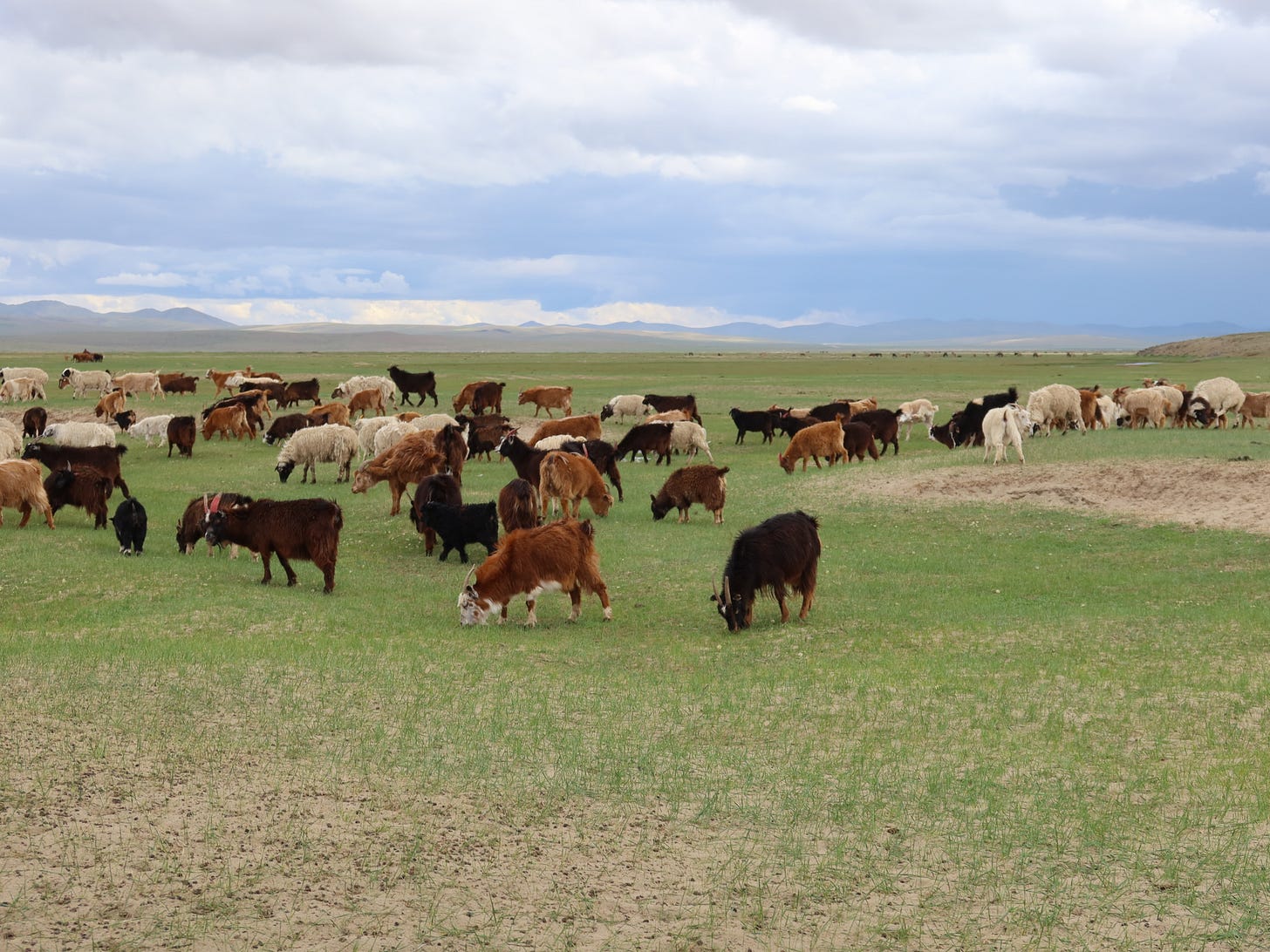
The horses and sheep and goats and cows and yaks and camels move and live in herds. Herd is an Old English word, but horde comes from the Mongols: ordo or ordu meant camp, army headquarters, military-political structure in the Turkic and Mongolian languages of the central Asian steppe, spoken by, among others, the people of the Golden Horde, a khanate run by some of Genghis’ descendants. The word bled into Europe, eventually into English, and the negative connotations it can bear (teeming, threatening, thronging) reflect the old European fear of the warmongering Mongols. The word Urdu, as in the Urdu language, comes from the same root, via Persian.
The English exclamation hurray also comes from the Mongols, from, writes Weatherford, “the ancient Mongol phrase ‘huree, huree, huree’ that ended all prayers, similar to the Christian use of amen.”
The sections of the book about religion under the Mongol Empire are fascinating. Freedom of religion was guaranteed by law, and the capital had dedicated areas for mosques, churches and Buddhist temples. Mongolian Shamanism was and is still an important part of Mongols’ beliefs but there were also Christian khans, Muslim khans and Buddhist khans (the dominant religion in Mongolia today is Tibetan Buddhism).
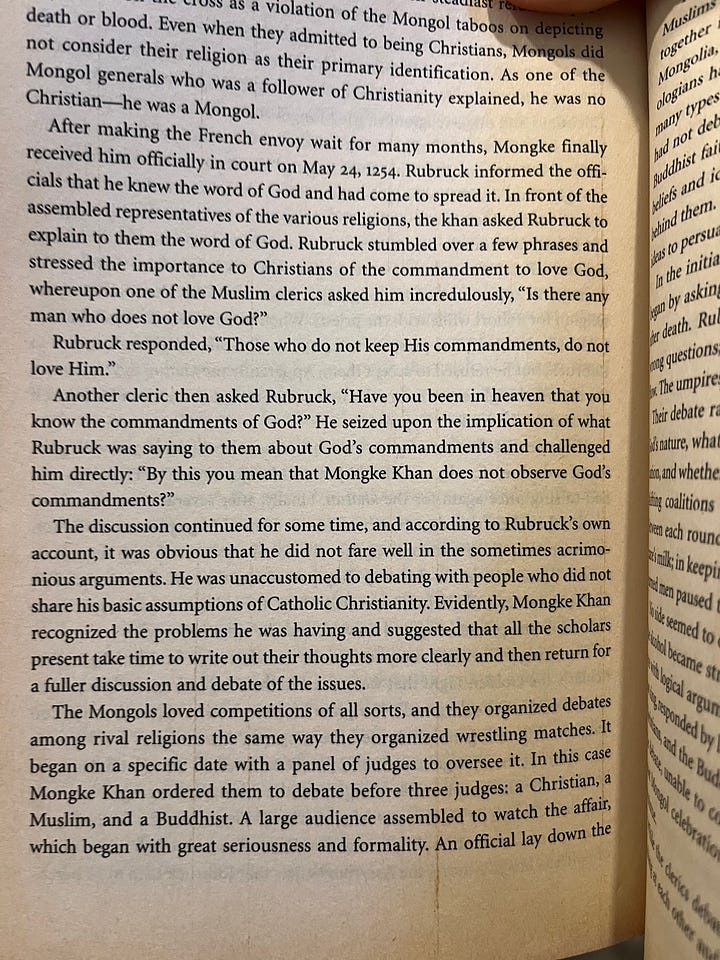
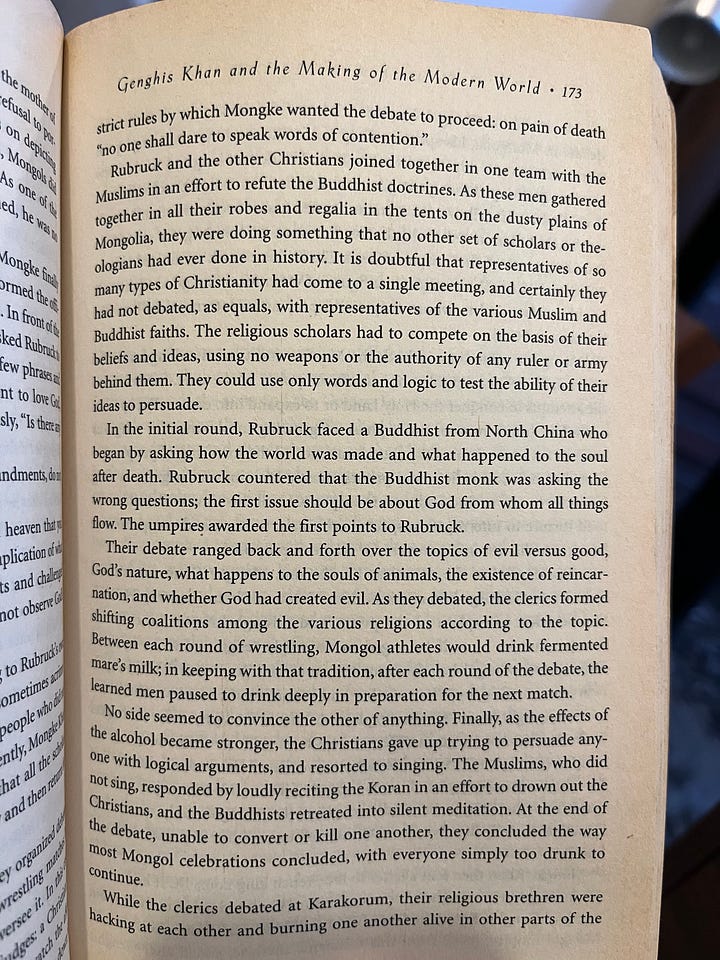
Also, they were very skeptical of the Pope.
Weatherford went on to write an entire book about this topic, called Genghis Khan and the Quest for God: How the World's Greatest Conqueror Gave Us Religious Freedom. Also, he is the only non-Mongolian to be awarded Mongolia’s two highest national honours, and he now lives on a mountain in Mongolia. King!
Definitely read this book if you only have a vague, Mulan-influenced idea of who the Mongols were (actually in the Disney film the villains are their predecessors the Huns) and if you want to read a very convincing argument for why the Mongol Empire should get credit for ending the European Dark Ages and sparking the Renaissance.
One of the main reasons the Mongols were such successful conquerors is because of their horses. There was no infantry; the entire army rode on horseback, and traveled with a gigantic herd, so each soldier had several spare horses to switch to when one got tired, enabling them to cover longer distances faster than any army in the world.
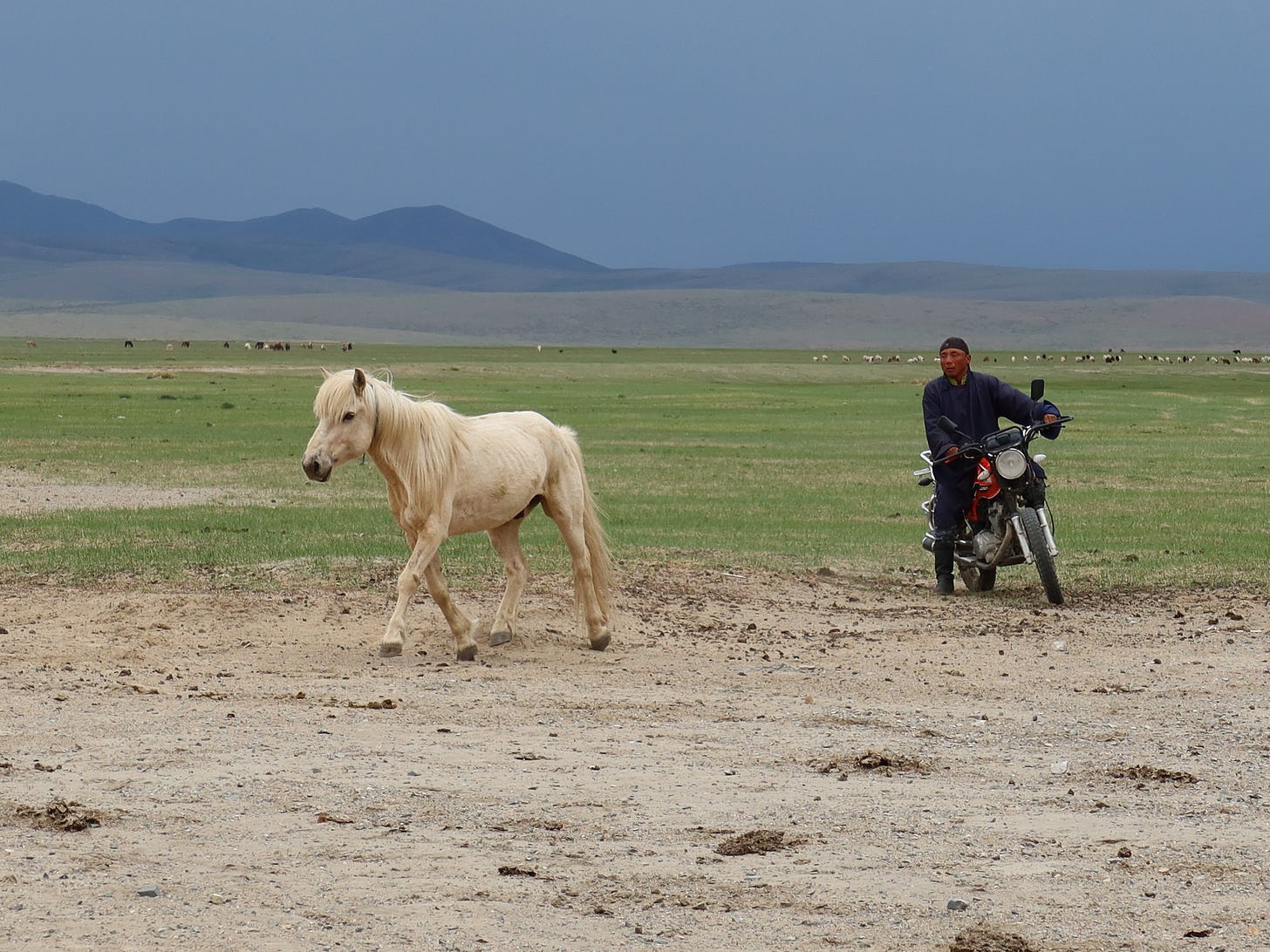
In winter the horses grow thick coats and long shaggy manes; when we arrived, the family we stayed with had only moved their gers from the winter camp to the summer camp location one week earlier. The horses’ winter coats were coming off in clumps and they were getting their summer haircuts. None of them have names; the family refers to them by their colors. The horses are on the national emblem, and the money, and everywhere on the steppe, and people talk about them all the time. Fellow horse girls, this is the country for you.
“Mongolian horses are very unique, something close to the human mind,” said Sansar. “They know where they are, they know where they’re going, they know their home, they know their birthplace.”
They roam the steppe freely in herds led by one stallion. There are no fences. They fend for themselves all year, finding their own water sources and grazing spots, and stand unruffled on the plains in minus 40 degree (Celsius and Fahrenheit) cold.
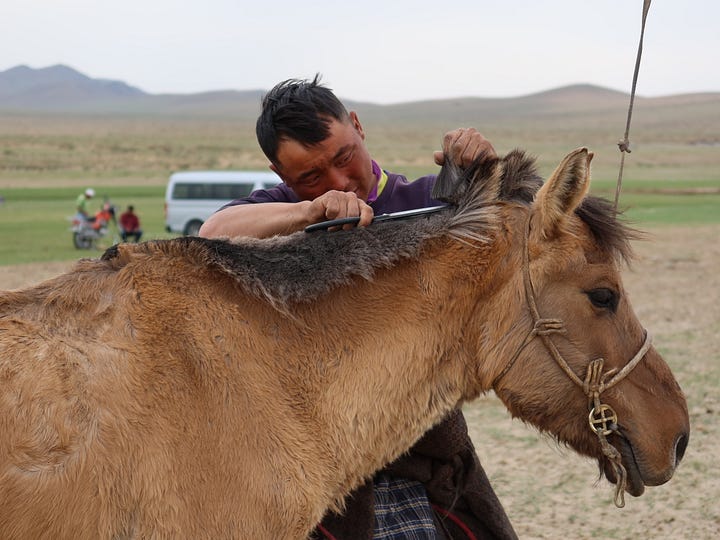
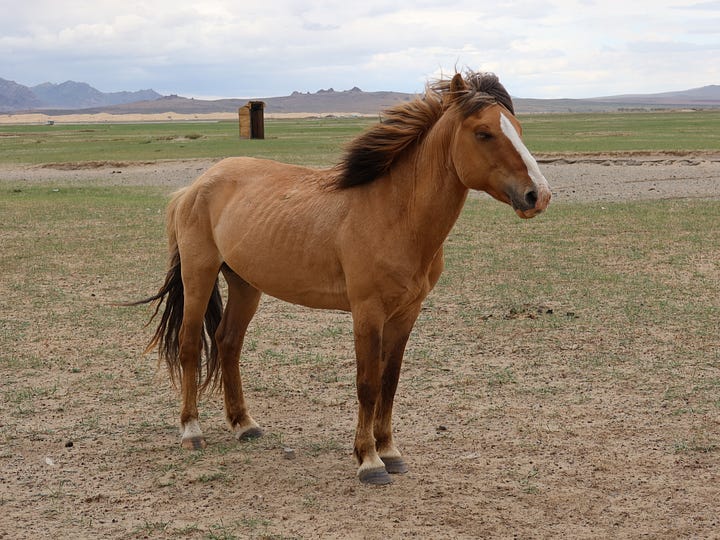
There are about 70 million livestock animals in Mongolia, 4.2 million of which are horses, compared to 3.3 million people. (Interesting fact: Inner Mongolia, the autonomous region of China, has a population of 24 million that includes 5 million ethnic Mongols—more than there are in Mongolia itself.)
Mongolia’s capital, Ulaanbaatar, has a population of around 1.5 million, which is crazy because half the population of the least densely populated country in the world live in one very polluted urban cluster and spend a lot of time stuck in UB’s terrible traffic (“Agglomeration in action,” financial journalist Mike Bird excitedly observed) while, just outside the city limits, lie the grasslands and the eternal blue sky. But wanting to move to the city is understandable. Nomad life is hard work and, since the internet, probably feels a lot more isolated than it used to. Young people, especially women, are heading to UB for university and jobs.
One guy (who himself lives in the city) lamented to us, “All the young nomadic people, they want to go to the city, have some coffee, some chicken—the fancy life. It’s so sad. Then who’s gonna look after the 100 million animals?” Except another thing is there are slightly too many livestock animals right now, in part because many nomads are expanding their goat herds to sell cashmere, Mongolia’s third-biggest export after copper and gold (i.e. the most lucrative thing you can do if you’re a herder). All the animals need lots of pasture to graze, and if there are too many, the grass doesn’t grow back quickly enough. Overgrazing causes desertification.
“When I was in my childhood,” Sansar said, touching just below his knee with one hand, “Nature was so beautiful then. Grass comes up to here.”
I looked around, thinking it was a funny thing to say, because it was so beautiful now.
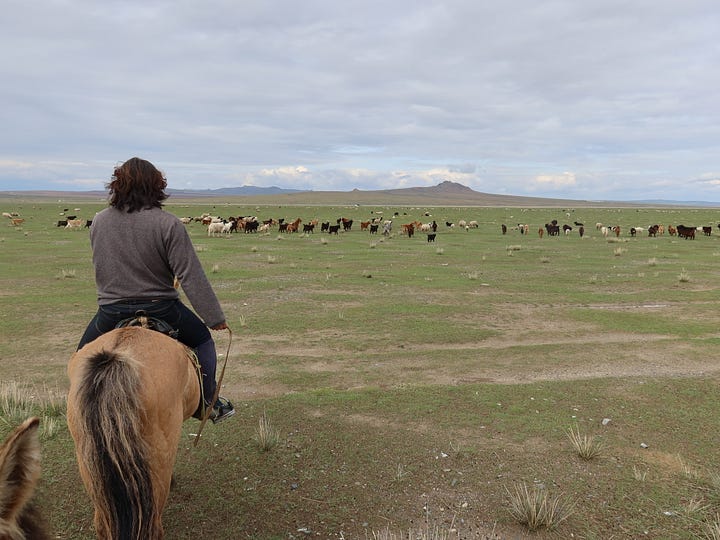
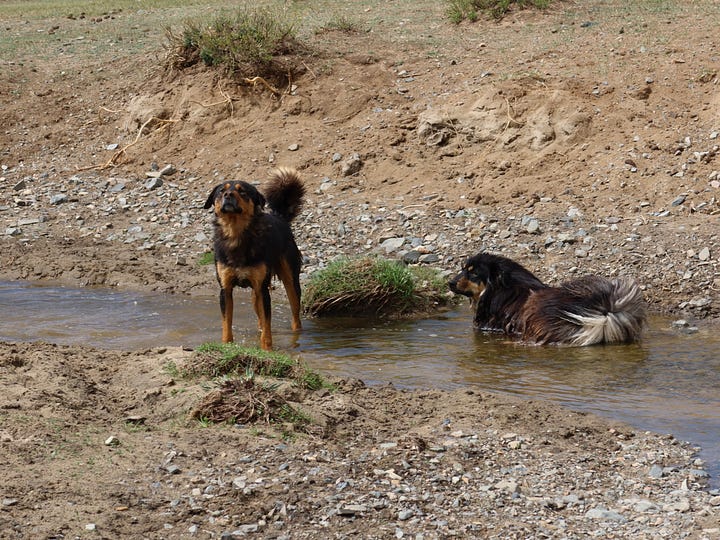
Thanks for reading!




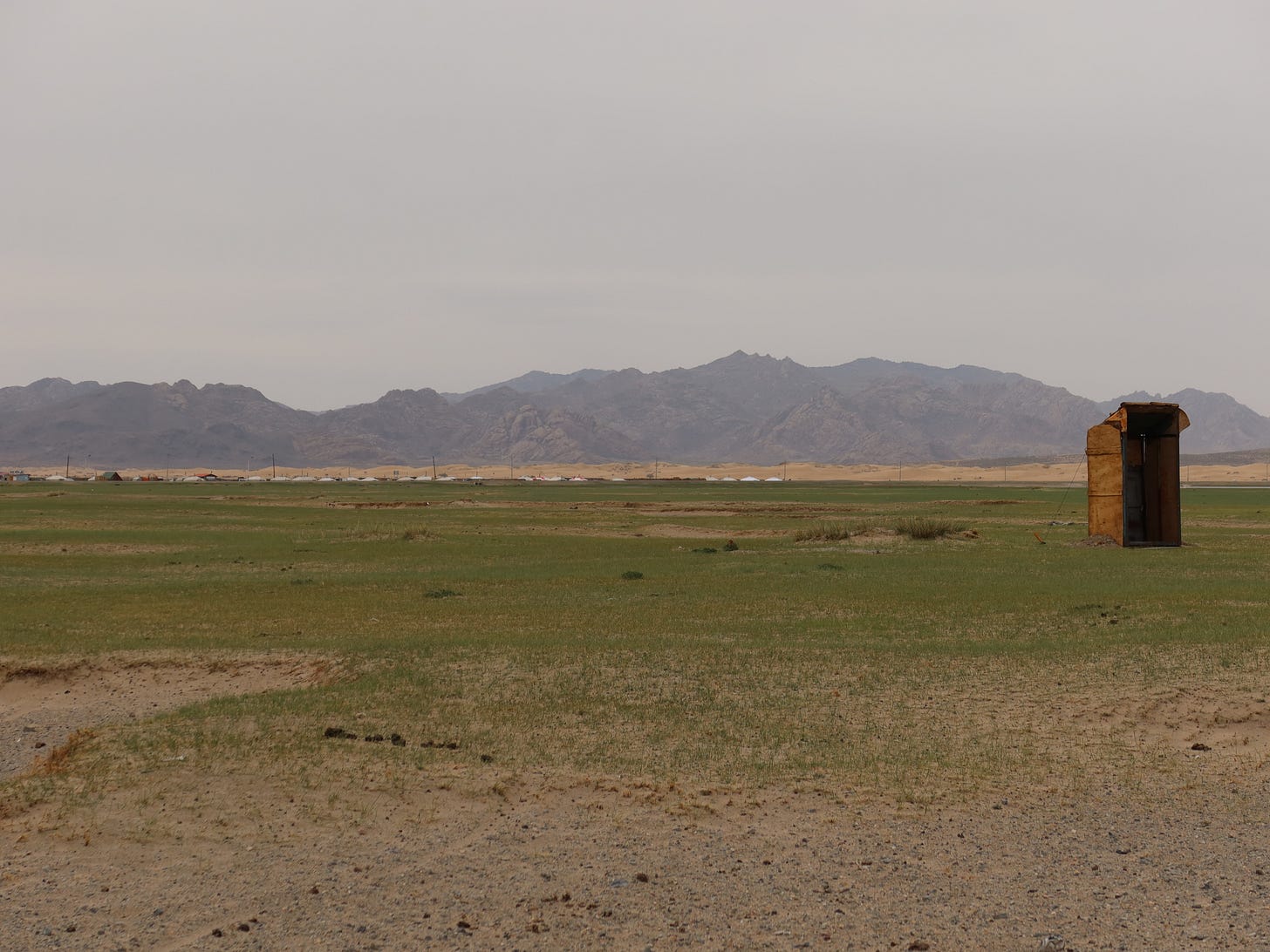
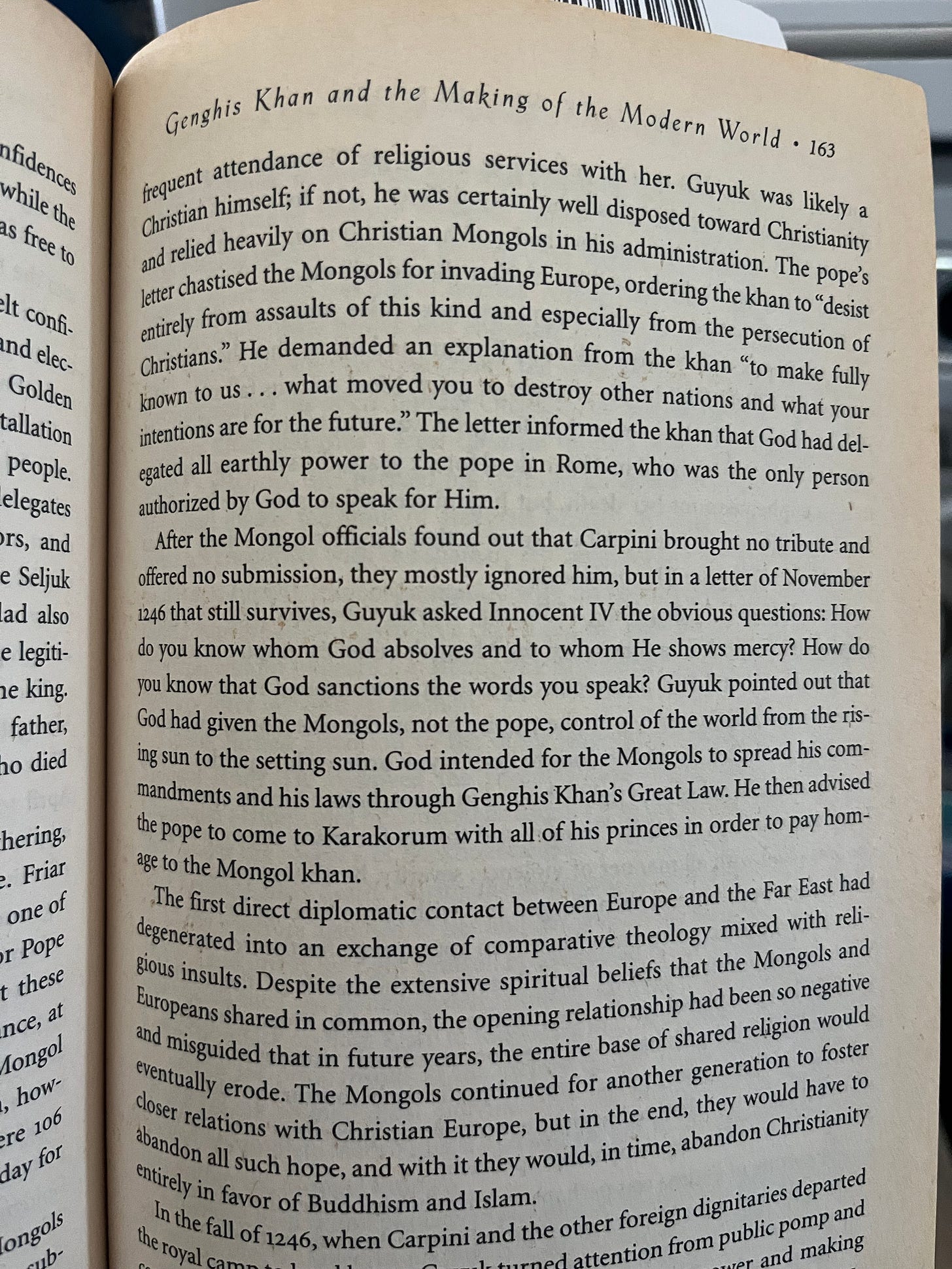
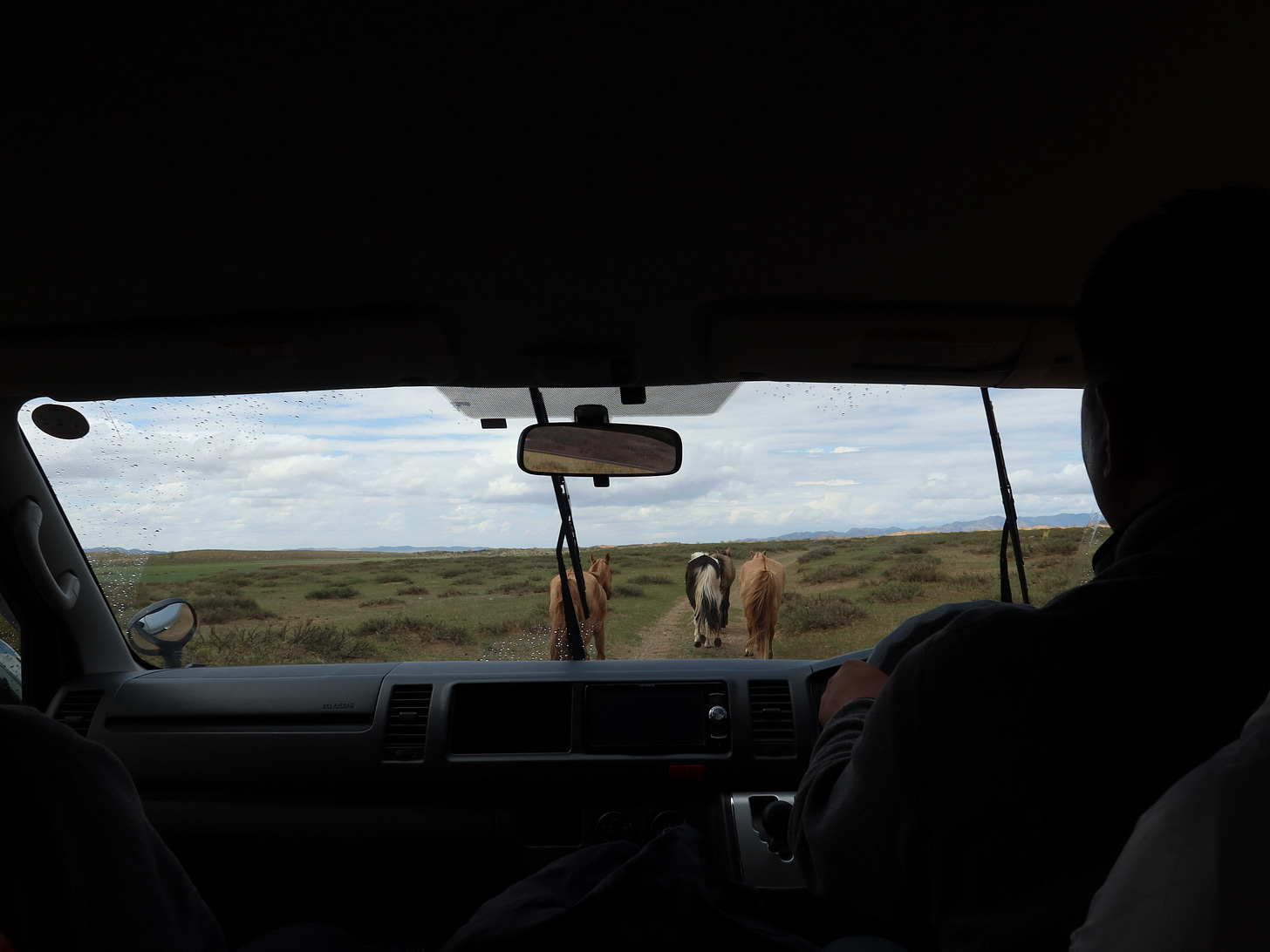
'There was no infantry; the entire army rode on horseback, and traveled with a gigantic herd, so each soldier had several spare horses to switch to when one got tired, enabling them to cover longer distances faster than any army in the world.'
holy shit.
So beautifully written!